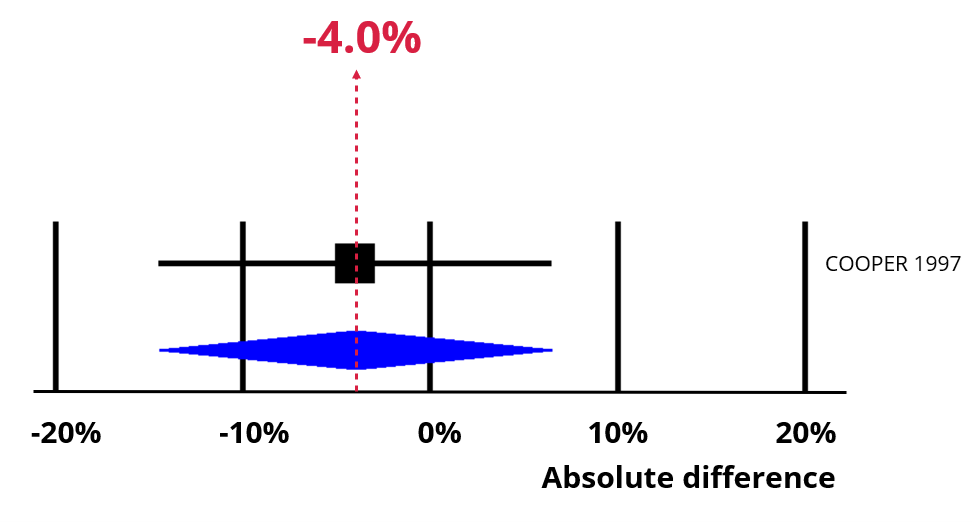Participants were informed of all the possible treatment options within the trial, explained the importance of randomisation but also given the option to choose a specific treatment if they had a strong preference.
A patient preference design increased total participation but made little or no difference to recruitment to the randomised trial.
A decrease of -4% (95% confidence interval = -15% to 7%).
GRADE Low certainty.
We recommend that trialists use patient preference design in the context of an intervention evaluation.
See Resource bundle below for details on how to use patient preference design.
Imagine a trial that needs to recruit 30 participants and initial recruitment is 30% of those approached. This means you’d need to approach 100 people to recruit 30 of them (see chart).

Now imagine using patient preference design. The chart below shows the impact of an absolute decrease of -4% (95% CI = -15% to 7%). Recruitment is now 26%, which means our best estimate is that 115 people would now need to be approached to recruit 30 of them.


Trial Forge will make trials more efficient by looking for marginal gains across all trial processes, from research question to implementation into routine care. It will encourage everyone connected with trials to be more sceptical of what we do by asking for the evidence behind all of our trial decisions.